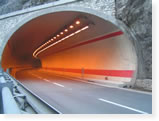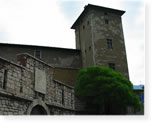Projects
Projects
Wireless sensor networks (WSNs) are expected to play a critical role in the next computing revolution of cooperating objects and smart embedded devices. However, industry adoption is hampered because WSNs are currently very difficult to program. The EU FP7 project makeSense intends to improve the ease of WSN programming by allowing programmers to express high-level objectives and leave the low-level details to the compiler and run-time system. The project enables integration of WSNs with other systems, such as business processes. The makeSense members envision the project results to be not only a landmark tool for WSN software development, but also a new way to look at WSN programming that increases productivity and business value, enabling a far-reaching adoption of WSNs in the European industry. The contribution of the group to the project will be the design and implementation of the macroprogramming language, along with the associated distributed protocols and run-time.
TRITon is a research project funded by project members and the Autonomous Province of Trento aimed at advancing the state of the art in the management of road tunnels. An example application, central in TRITon, is adaptive lighting. The light intensity inside tunnels is currently regulated based on design parameters and the current date and time, regardless of the actual environmental conditions. In TRITon, the light intensity inside the tunnel will instead be regulated through a wireless sensor network. This will relay sensed light information to a control station, which will exploit these information for fine-grained adaptation of the light intensity, thus reducing costs and improving safety. In this project, D3S focuses particularly on the deisgn, implementation, and deployment of the sensor network feeding data to the control mechanisms.
In the context of an aging European population, ACube acts by conceiving a highly-developed smart environment to be deployed in nursing homes as a support to medical and assistance staff. The sophisticated features of the envisaged system will have a major impact on quality of care, life quality of the assisted, as well as working conditions of caregivers. The major technical outcome of the project is an integrated, layered architecture for intelligent monitoring, able to efficiently accommodate and manage a wide range of sensors, and to combine the acquired data into high-level perception, in a highly configurable and autonomous manner.
ACube will deliver two pilot sites, located in the premises of public institutions for assisted living, a daycare center for Alzheimer disease in Trento and a rehabilitation center located in Milan. The contribution of the group to the project will be the middleware running on top of the wireless sensor network, which will provide multi-hop coordination, QoS and real-time guarantees, and support for mobile-sensors.
ACube will deliver two pilot sites, located in the premises of public institutions for assisted living, a daycare center for Alzheimer disease in Trento and a rehabilitation center located in Milan. The contribution of the group to the project will be the middleware running on top of the wireless sensor network, which will provide multi-hop coordination, QoS and real-time guarantees, and support for mobile-sensors.
Torre Aquila is a 31 meters-tall tower located in Trento in the Buonconsiglio castle, one of the most important medieval historical sites in Italy. Inside the tower, thousands of visitors each year contemplate a group of 11 frescoes named "Ciclo dei Mesi" (cycle of the months). The structural integrity of the tower are a concern for the local authorities, because of possible construction works and vehicular traffic. To assess the tower's conditions, we deployed a wireless sensor network monitoring environmental quantities as well as the building deformations and vibrations. We designed customized hardware to address the peculiar application requirements, and a dedicated software layer that sits entirely atop our TeenyLIME middleware.













